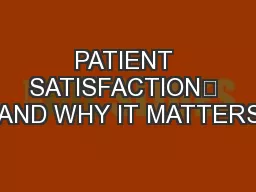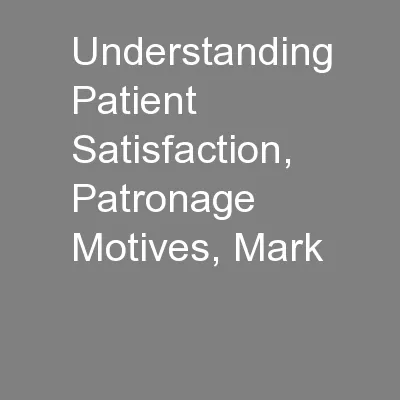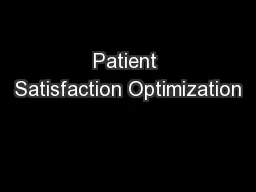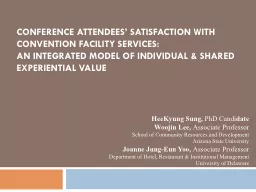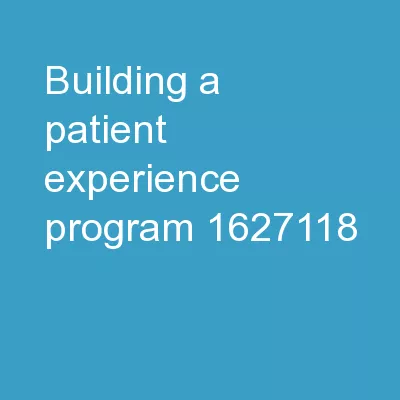PPT-PATIENT SATISFACTION AND WHY IT MATTERS
Author : alexa-scheidler | Published Date : 2018-02-24
Why It Matters CMS Centers for Medicare amp Medicaid Services hospitals and insurance providers are using patient satisfaction to help define and measure quality
Presentation Embed Code
Download Presentation
Download Presentation The PPT/PDF document "PATIENT SATISFACTION AND WHY IT MATTERS" is the property of its rightful owner. Permission is granted to download and print the materials on this website for personal, non-commercial use only, and to display it on your personal computer provided you do not modify the materials and that you retain all copyright notices contained in the materials. By downloading content from our website, you accept the terms of this agreement.
PATIENT SATISFACTION AND WHY IT MATTERS: Transcript
Download Rules Of Document
"PATIENT SATISFACTION AND WHY IT MATTERS"The content belongs to its owner. You may download and print it for personal use, without modification, and keep all copyright notices. By downloading, you agree to these terms.
Related Documents

